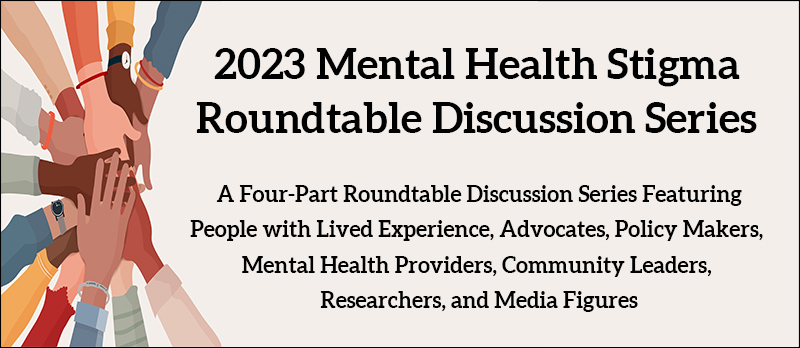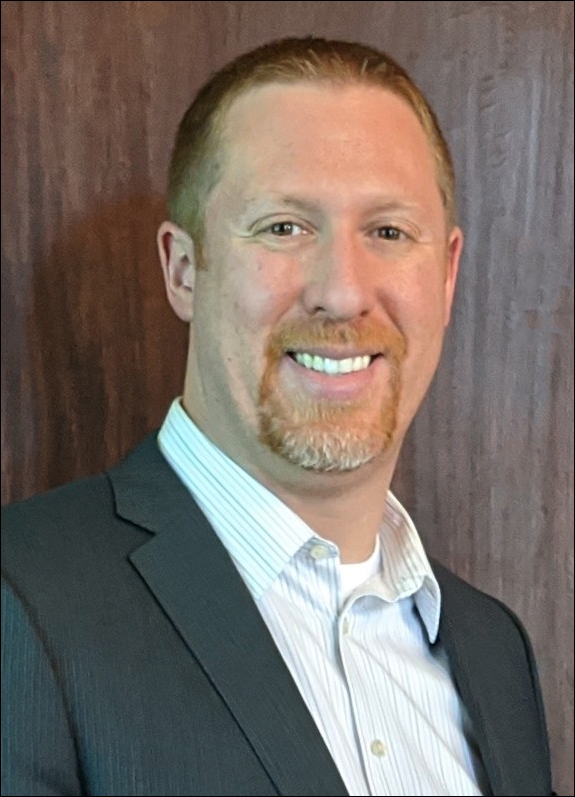The New York State Office of Mental Health (OMH) in partnership with Behavioral Health News (BHN) organized four roundtable discussions as part of a larger strategic plan to reduce the stigma of mental illness. The roundtable panels consisted of experts working in community-based agencies, most also with lived experience of a mental health condition and one roundtable consisted of representatives from the media. The audience was broad and consisted of persons with lived experience and families, Peer Specialists and community advocates, staff working in behavioral health community-based and government agencies, and clinicians, including social workers, psychologists, and physicians. In this essay, the team of organizers (the roundtables’ facilitator, Office of Mental Health (OMH) leadership, BHN directors, and two stigma researchers), synthesized the insights and suggestions that emerged from this effort to contribute to the discussion of how to reduce stigma and promote the behavioral health and wellbeing of persons in New York State.
The panelists discussed how the different types of stigmas manifest as internalized, anticipated, experienced, and stigma inflicted upon others. They shared how some persons with lived experience of mental health conditions and their families can internalize, that is, absorb the negative stereotypes that the public often associates with mental health challenges, and how some anticipate, that is, expect to be stigmatized by others. How these two types of stigmas prevent accessing and staying in mental health services was also discussed. Internalizing and anticipating stigma can also manifest as self-blame and shame and undermine self-care. Therefore, even persons who are not exposed to stigmatizing actions or behavior by others (e.g., being discredited and made to feel as lesser than or being excluded from opportunities such as, a job or a social event) can still be harmed by internalized and anticipated stigma. Experiencing stigma was defined as being personally exposed to stereotypes and excluded from opportunities and as witnessing the stigmatization of peers, friends, and family, a form of vicarious stigmatization. Family members of persons with mental health conditions and especially parents, brought up their exposure to courtesy stigma or stigma by affiliation and discussed the deleterious impact of this form of stigma. The mental health workforce can also experience this type of stigma by affiliation. The panelists also highlighted that health care and social service settings and other places where people access services and support are not free from stigma and that care providers’ stigmatizing behaviors can jeopardizes recipients’ continuity of care, progress in recovery and wellbeing. The insight that some providers inflict or enact stigma on service recipients, despite being knowledgeable about mental health conditions and routinely interacting with service recipients, suggests the limitations of educational and contact interventions.
Bravely recognizing the presence of stigma in health care and social services settings ignited a discussion about differential access to care, quality of care and behavioral health inequities. The panelists discussed how the different social identities or statuses of service recipients including race, ethnicity, gender, age, sexual orientation, place of residence, religious affiliation, documentation status, and involvement with the criminal justice system and/or with substance use, intersect with the stigma of mental health conditions and result in differential exposure to stigmatization. For instance, when applying for a job or housing or interacting with health care providers, a Black man with a history of involvement in the criminal justice system and a mental health diagnosis will be exposed to greater stigma compared to a White non-Latinx woman without a forensic history despite having the same diagnosis. Sharing their lived experiences, the panelists from diverse racial and ethnic backgrounds and other statuses explained that the stigma of mental illness manifests differently when it interfaces with racism, gendering, classism, and other forms of -isms that also negatively stereotype and exclude persons from life opportunities. Adopting the lens of intersectionality to understand the more profound and catastrophic impacts of stigma experienced by racially and otherwise minoritized persons with mental health conditions was deemed essential and urgent if we are committed to reducing health inequities in our society. To encourage adoption of an intersectional lens, one recommendation is to always use the term intersectional stigma of mental illness.
Health inequities were also the context in which panelists discussed the need to revisit what we consider to be effective mental health treatment and services, including stigma-reducing interventions and programs for diverse recipients, especially those from racially and ethnically minoritized communities. Increasing language access and availability of culturally humble providers were among the panelists’ suggestions for expanding equity. The recognition of how historical trauma in minoritized communities can contribute to mental health challenges and the need to examine and integrate stigma-reducing interventions, programs and treatment modalities developed by minoritized communities were the strategies panelists proposed. We were encouraged to implement “our communities’ ways” as one panelist stated. Going beyond provider cultural competence that refers to knowledge towards cultural humility that refers to embracing a respectful, open-to lifelong-learning approach to providing care was a recommendation. Prioritizing person-centered approaches to care and shifting away from cultural adaptations of “evidence-based” treatments (developed for White non-Latinx service recipients) to community-based treatments (developed by members of the community) was a novel and radical insight that emerged.
In the context of health inequities and intersecting stigmas, the profound stigmatization of substance use was a core theme. The public’s tendency to blame persons who use substances, to misunderstand the impact of addiction in their lives, and the stubborn association of substance use with dangerousness and violence has generated and reproduced a highly negative stereotype of persons who use substances. This effectively undermines their treatment and chances for recovery. Moreover, when the public stigmatizes substance use it fails to recognize that this is one strategy for alleviating the symptoms and suffering among persons who lack access to mental health care, mostly from racially minoritized and resource-poor communities. This is another primary pathway leading to health inequity. As a suggestion, we should consider mental health and substance use challenges to both be behavioral health challenges, and design effective stigma-reducing interventions, programs, and treatment modalities that address both.
The intractable stigma of mental health conditions also stems from to the stereotypical association of mental illness with violence and unpredictable dangerous behavior. Despite robust research evidence that only a small percent of violent acts (3-5%) can be attributed to persons with serious mental illness, the public tends to equate mental illness with dangerousness. The media frequently fuels this harmful misunderstanding by producing and disseminating sensationalized stories to attract a larger audience. However, the media roundtable panelists were the exception to this trend and provided recommendations on how the media can be an ally in the fight against stigma. The journalists on the panel discussed the need to produce affirming, strengths-based stories that reveal the human complexity of persons with mental health conditions and highlight their capabilities instead of focusing exclusively on their diagnosis. To sever the by-default association of mental illness and violence, the recommendation was to not mention a person’s mental health condition, unless it is clearly relevant to the violent event in the story. The media can also serve as an effective source of education, contact, and advocacy/protest interventions by providing accurate information on mental health conditions, how to access effective treatments and services, and present humanizing stories of challenges and recovery to counteract the negative mental illness stereotypes. The role of language in normalizing mental health statuses and the need to refrain from medicalizing different statuses and experiences emerged across all four roundtables and especially in the media panel. It was encouraging that in their stories, journalists recognized the importance of providing equitable access to mental health care through placing services in non-traditional mental health care and non-stigmatizing settings such as, schools and the workplace. To these settings, we add faith-based organizations such as, churches, synagogues, and mosques, and community-based organizations that are not focused on mental health but that attend to the social determinants of health such as, housing, food insecurity, or education and training.
Saving the most significant theme for last, all panels emphasized that if we are to reduce the stigma of behavioral health and health inequities, we must intervene on many different levels: the individual, interpersonal, organizational/institutional, and the societal. Designing interventions on the individual level to decrease internalization and anticipation of stigma among persons with mental health conditions and their families, or even interventions on the interpersonal level to enhance providers’ cultural humility and establish person-centered non-stigmatizing services will not suffice. We must attend to the organizational/institutional level by integrating the expertise of persons with lived experience, peers, and community advocates as equal to the expertise of clinicians and researcher partners. The policies and practices of mental health institutions would greatly benefit from following the disability movement principle of, “Nothing about us without us,” as a primary strategy to providing non-stigmatizing and effective services. Going beyond integrating peers into mental health services, we propose the development of a mental health movement that will mobilize the expertise of lived experience and through organizational coalition building and other community-based strategies work towards social change and true mental health equity. Such a movement would advocate, protest, but also lobby for policies and laws that operate on the societal level to protect and promote the wellbeing of persons with mental health conditions and their families.
Suzanne B. Feeney, MBA, is Director, Program Management, Office of Advocacy and Peer Support Services, and Principal Investigator, New York Project Hope at the New York State Office of Mental Health. Helen-Maria (Marilena) Lekas, PhD, is Co-Director, Center for Research on Cultural and Structural Equity (CCASE), Division of Social Solutions and Services Research, Nathan S. Kline Institute for Psychiatric Research, and Associate Professor of Psychiatry, Grossman School of Medicine, New York University. David Minot is Executive Director, Mental Health News Education, Publisher of Behavioral Health News and Autism Spectrum News. James Plastiras is Director of Public Information at the New York State Office of Mental Health. James Rodriguez, LCSW, PhD, is Senior Director of Clinical Initiatives, McSilver Institute for Poverty Policy and Research, and Adjunct Faculty, NYU Silver School of Social Work. Karin A. Wagner, PhD, is Clinical Quality Initiatives, Office of Quality Improvement, New York State Office of Mental Health. Philip T. Yanos, PhD, is Professor, John Jay College of Criminal Justice, City University of New York Psychology Department. Jessica Zahn, is Director of Marketing at the New York State Office of Mental Health.














